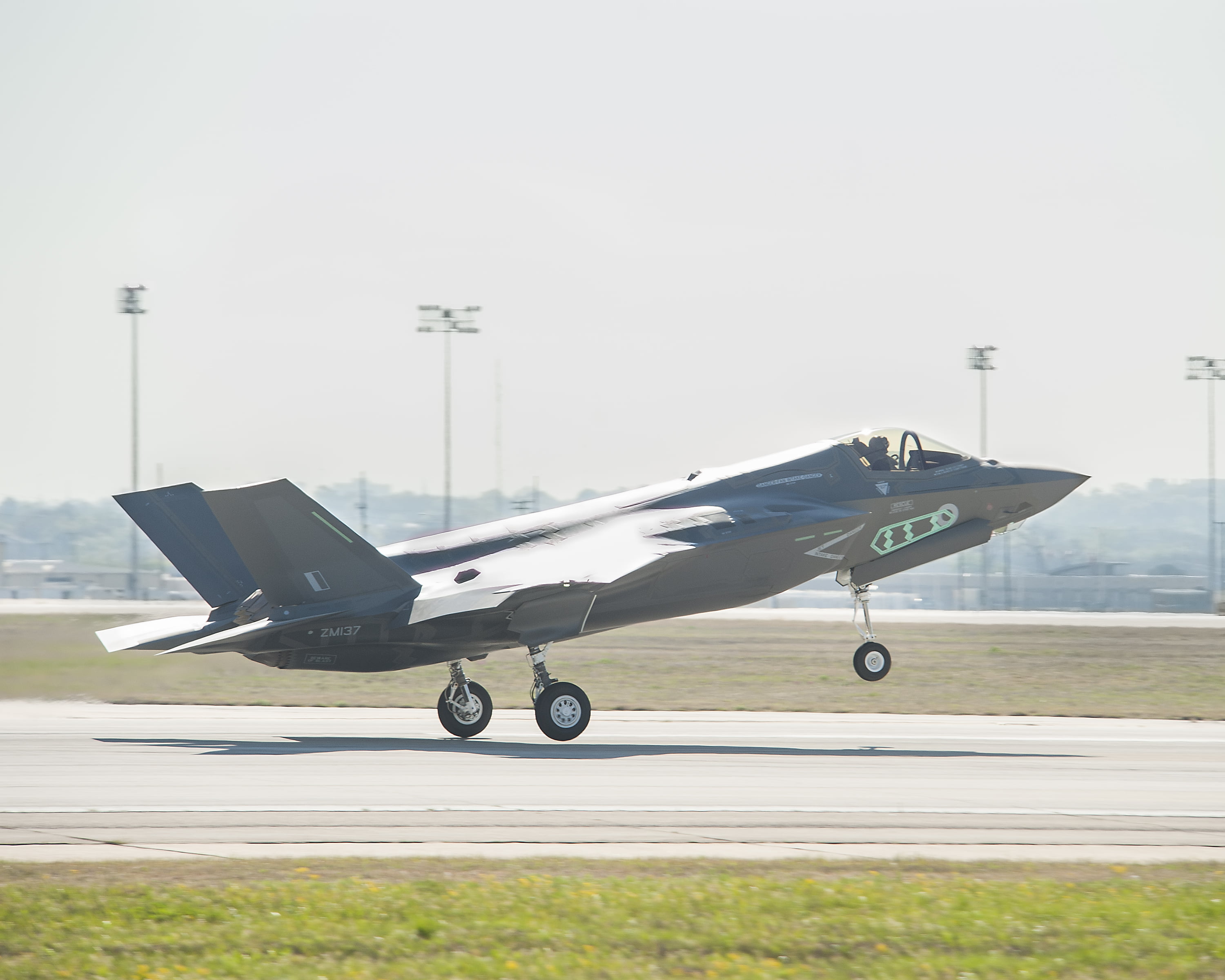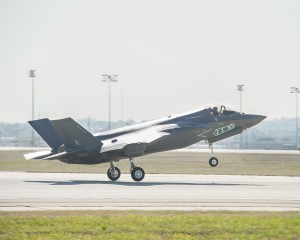04/14/2013: First UK Royal Navy student-pilot flies F-35
[slidepress gallery=’first-uk-royal-navy-student-pilot-flies-f-35′]
Credit:33rd Fighter Wing Public Affairs
By: Maj. Karen Roganov
4/10/2013 – EGLIN AIR FORCE BASE, Fla.
The first United Kingdom Royal Navy student aviator at the 33rd Fighter Wing, training to be an F-35B Lightning II instructor pilot, completed his first sortie in the joint strike fighter here April 10.
Royal Navy Lt. Cdr. Ian Tidball flew with the Marine Fighter Attack Training Squadron-501. “From a handling perspective, it is a responsive and smooth airplane to fly with an awful lot of thrust and power,” said Tidball. “Everything I trained for, especially taking advantage of the full mission simulator made this an easy flight.”
Prior to taking to the skies, Tidball’s preparation included about six weeks of academics and kinetically-based simulators at the F-35 Academic Training Center. The center is the high-tech hub in a campus designed especially for fifth-generation joint strike fighter maintainer and operator training. It is hosted at the 33rd FW.
“Ian’s flight today was another indicator that our international partners play an integral role in our flying operations,” said Col. Andrew Toth, the 33rd FW commander. “We look forward to when a third British jet arrives in the near future, further expanding our capabilities.”
Marine Lt. Col. David Berke, the VMFAT-501 commander met Tidball on the flight line to cheer on his success and ceremoniously hand him the F-35B Short Take Off/Vertical Landing (STOVL) patch.
“Excellent job,” said Berke. “Your flight was another step in the direction of implementing a truly multinational training program.”
It takes ten flight hours, or about six to seven sorties, for a student pilot transitioning from other aircraft to become a qualified F-35 pilot. Tidball came from a background with the British Sea Harrier and the F-18 Super Hornet.
Wing Commander Jon Millington, the senior UK officer at the 33rd FW, a handful of British maintainers training within the Marine squadron, and Tidball’s family were on the flight line to witness the historic event for both countries. “The level of cooperation, training and professionalism has far exceeded our expectations,” said Millington. “The UK team is fully integrated in the Marine unit and flying each other’s jets interchangeably.”
Tidball will be able to train Marine pilots once he completes his F-35 pilot qualification, he added.
It takes ten flight hours, or about six to seven sorties, for a student pilot transitioning from other aircraft to become a qualified F-35 pilot.
Like the other United Kingdom members at Eglin, Tidball said he is looking forward to the future when the team of 12 Royal Air Force and Navy maintainers and UK two pilots transition from Eglin to Edwards Air Force Base Calif., to perform operational testing on the jets in 2014.
“Prior to this assignment, I spent eighteen months at Edwards working with the Joint Operational Test Team,” said the UK pilot.
After returning to the JOTT, the follow-on plan for Tidball and his country will be for the UK’s F-35 team to achieve initial operating capability in 2018 in a land-based role and aboard the future HMS Queen Elizabeth aircraft carrier in 2020, according to Millington.



